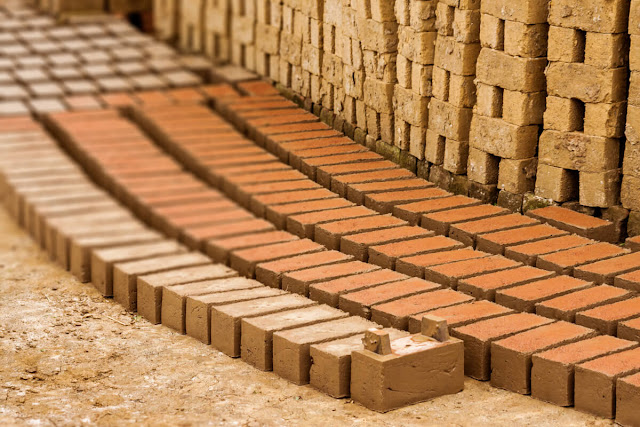WHY MUD BRICKS?
Mud bricks are exactly that, bricks made of mud. It is a technique that has been used extensively in construction and is one of the oldest known building materials in the world, dating back to 7000 BC. As they are made from natural materials, they are considered to be a sustainable and environmentally healthy alternative to more conventional construction materials. Minimal processing of the raw material is required and the majority of all the energy inputs come directly from the sun. They are cost-efficient to produce, have exceptional thermal and acoustic performances and as they are sourced from the earth, they are also non-toxic and completely recyclable.
6 Types of Mud Brick Recipes
Rammed Earth: 1 Clay, 1 Sand, ¼ WaterCob: 1 Clay, 1 Sand, ½ Straw, ½ Water
Adobe Brick: 1 Clay, 1 Sand, ½ Straw, ¾ Water
Wattle & Daub: 2 Clay, 1 Sand, 1½ Straw, 1 Water
Straw Clay Block: 2 Clay, 1 Sand, 2½ Straw, 1¼ Water
Light Straw Clay: 2 Clay, 1 Sand, 4 Straw, 1¼ Water
Clay Mortar: 1 Clay, 1½ Sand, ¾ Water
Performance Attributes
Structural Capability: To create brick walls more than several storeys high the mud bricks must be thick enough to carry the load. Mud brick can be used for more than just vertical walls; vaulted roofs and domes are also possible making this material very versatile in a structural capacity.
Thermal Mass: Mud brick walls have thermal mass properties that can produce limited to large thermal gains.Sound Insulation: The sound insulative capabilities a mud brick wall can maintain compared to a masonry wall is almost equivalent granted the mud brick wall is well built.
Fire and Vermin Resistance: Earth does not burn, and earth walls do not provide habitable conditions for vermin, so mud bricks provide high performances against vermin and fire.
Durability and moisture resistance: Provided that mud brick walls receive continuous and regular maintenance, they can maintain their ability to provide structural support for centuries.
Environmental Impacts: Mud bricks have one of the lowest negative impacts out of all the constructive materials. Its material make up does not include any organic matter as it is manufactured with clay and sand. the embodied energy that goes into the production of the brick is minuscule however they require large amounts of water.
Sustainable construction has significant long-term effects, allowing us to play our part in protecting the environment on a daily basis. Creating such structures also makes further sustainability efforts much easier, which can benefit both local communities and society as a whole. It isn't a coincidence that our ancestors used these materials and passed it on from generation to generation. They knew the importance of sustaining our planet from the harmful exploitation of resources. It’s time for us to take a step towards making people aware. That’s why our team has chosen mud bricks.
Text by Melina Vlastou









Comments
Post a Comment